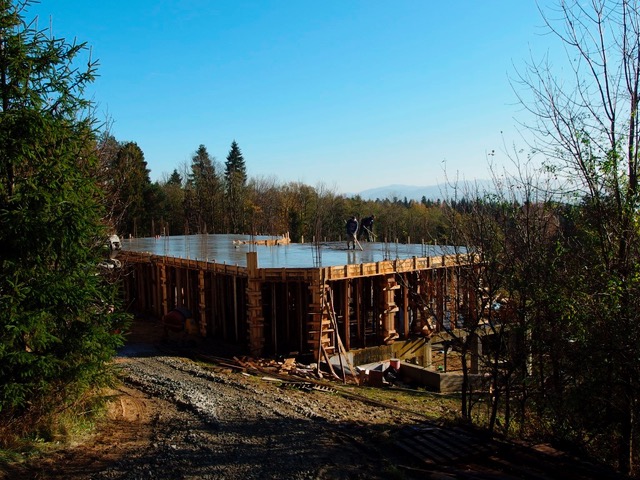
Scientific Aspects of Agnihotra: Animals – Bees (Part 15)
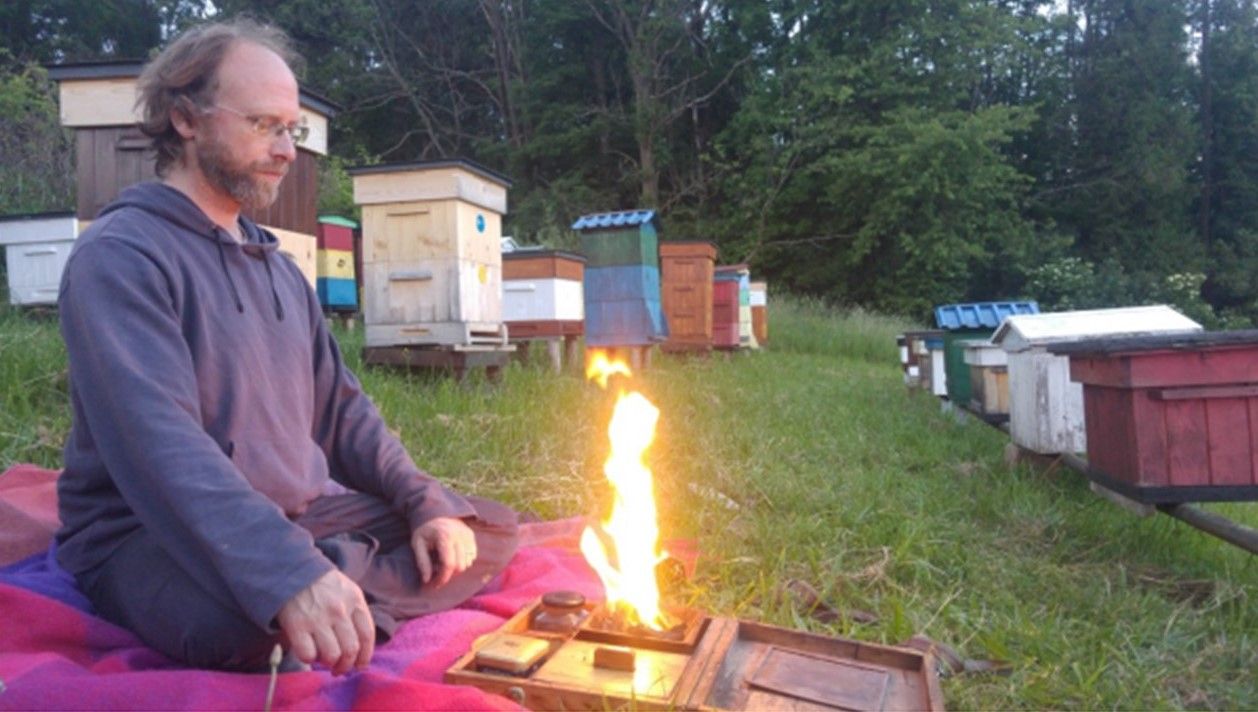
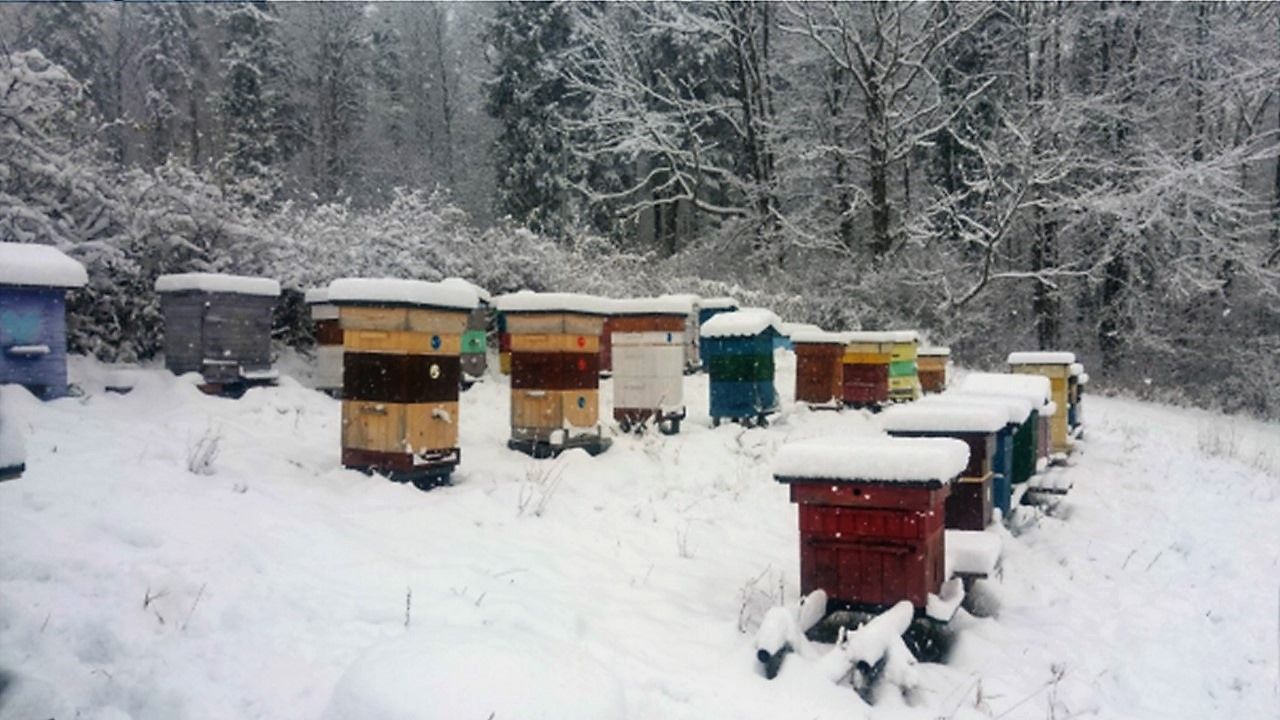

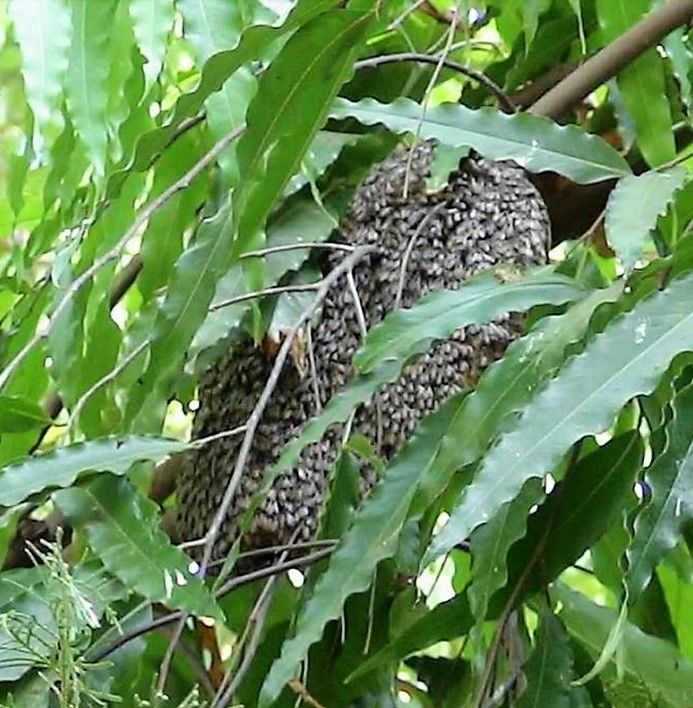





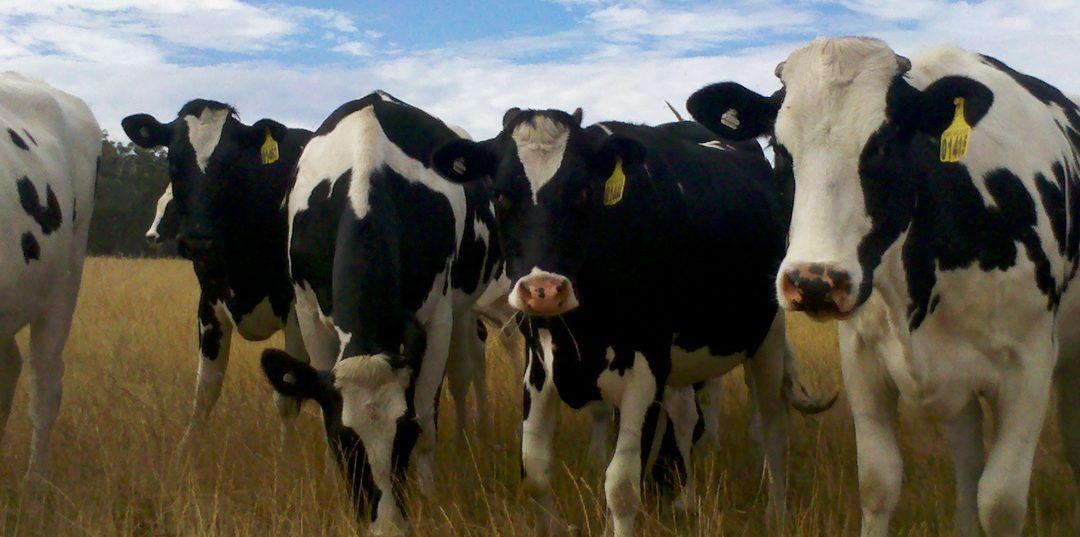
In this series of articles we have covered so far the effects of Agnihotra on our
environment (atmosphere, soil, and water resources) and also the use of Agnihotra in
agriculture / horticulture.
Now let us look into the effect Agnihotra has on animals and how it can be used for
animal husbandry. The first animal which comes to mind are cows.
Cows supply us with cow dung and milk from which we prepare cow’s ghee. Without
cows there would be no Agnihotra, no Vedic Yajnyas. Can cows also benefit from
Agnihotra?
Experience of many farmers show that the health of cows improves considerably in
Homa atmosphere. Also it was noticed that cows on Homa farms are more peaceful as
compared to neighbouring farms. Some examples:
Germany
Monika Koch, a German pharmacist, developed medicines based on Agnihotra Ash
which are used with all kind of human diseases showing wonderful results.
When the farmer from whom they got their cow dung said that one of his cows was
troubled by eczema she tried Agnihotra Ash. Nothing else had helped, but the ash cured
the eczema within a few days.
Another cow did not want to eat and got very weak – they added Agnihotra ash to the
fodder, the cow started to eat and got strong again soon.
Chile, South America
Nene was a young bull at a cattle breeder in farm in Amazone area, Chile, South America, worth Thousands of Dollars. He got the viral disease PIROPLASMOSIS which is transferred by ticks.
Medicines did not help and Nene could not get up any more, was close to dying.
Someone treated him with Agnihotra ash and with Agnihotra ash water. Next day he was up again, ate and got totally healed only with Agnihotra medicine.
Saving cows in England
Wenda Shetala as small child freed some calves meant for slaughter and hided them all
night in the forest.
When found, she was beaten up severely. But she vowed to create a refuge for cows when
grown up.
This she now created such a refuge and often gets old and sick cows.
She performs Agnihotra regularly on this farm and all her treatments are with Agnihotra
ash and with homeopathic medicines only.
Two years ago she also came to India for exchange of experience.

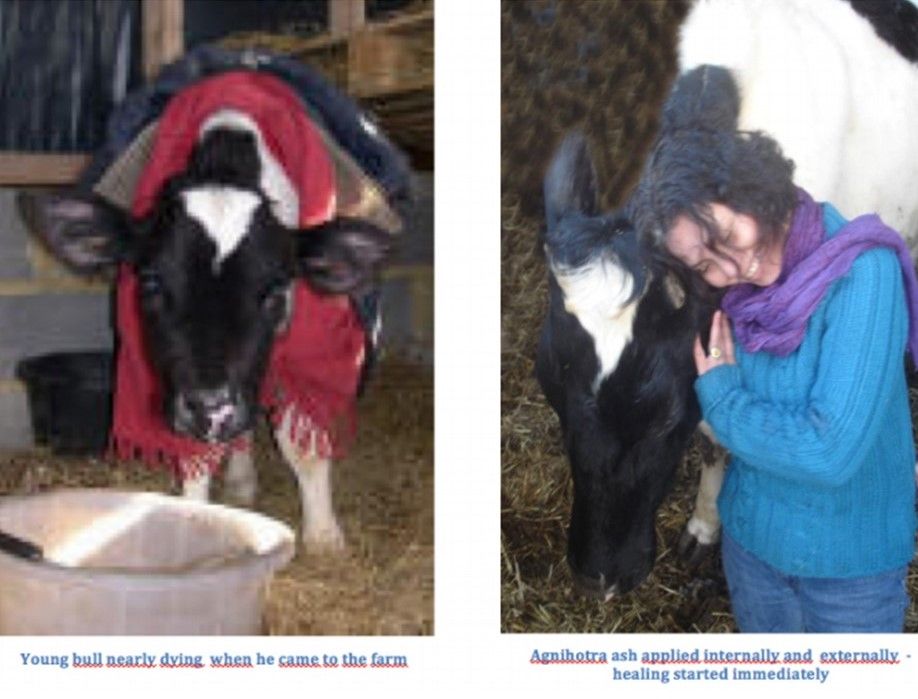
There are many more such reports showing how cows were healed with Agnihotra and
Agnihotra Ash. But till now there is only one systematic scientific study in this field.
This experiment was conducted at the Zoological Department of the National Agricultural
University in Tingo Maria, Peru, for a period of 18 months. It shows that in Homa
atmosphere there is a considerable improvement as compared to control in the following
respects:
* Reproductive Index
* Cow’s and calf’s mortality
* Muscle development
* Weight at birth
* Placenta Retention
* Cow – calf separation
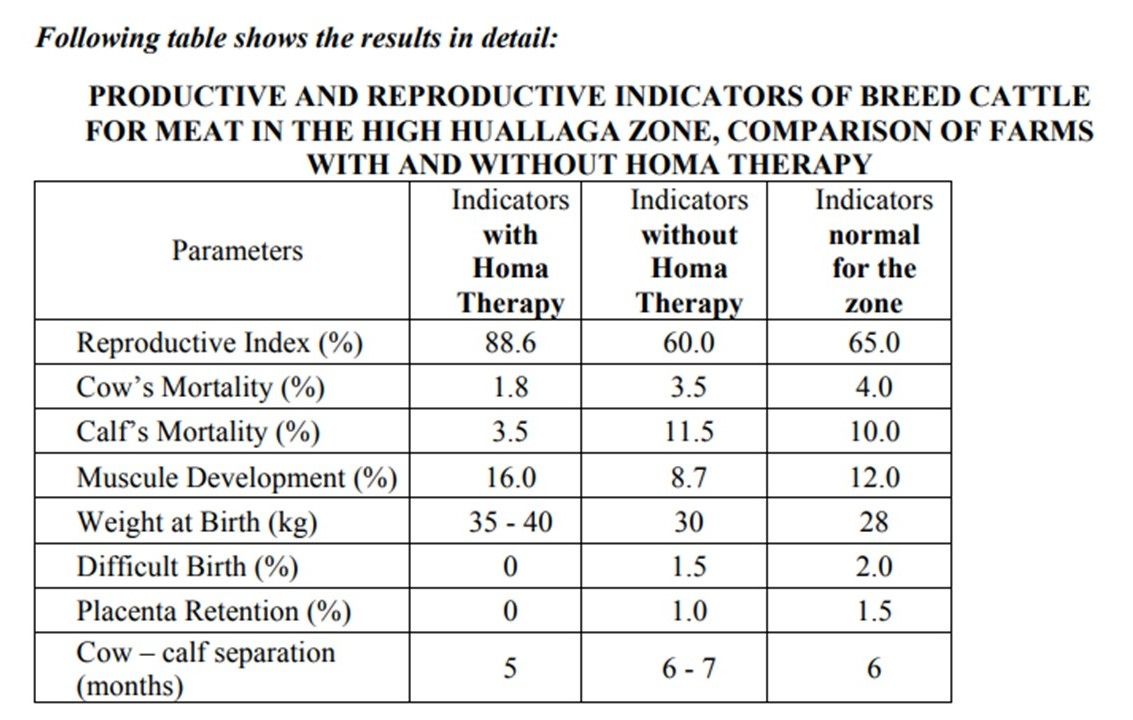

Since more than a decade now a dramatic decline of bee population has been noticed
worldwide. Now we learn that a similar decline can be found regarding all insects.
Recently an alarming study was published by scientists from Germany, Great Britain, and
the Netherlands. Insects were captured in nature reserves throughout Germany and
counted. This long-term study found that within 25 years there was a reduction of 75%!
Hans de Kroon, at Radboud University in the Netherlands who led this research
commented:
“The fact that the number of flying insects is decreasing at such a high rate in such a large
area is an alarming discovery.”
Prof Dave Goulson of Sussex University, UK, also part of the team conducting this study,
added: “Insects make up about two-thirds of all life on Earth [but] there has been some
kind of horrific decline,” “We appear to be making vast tracts of land inhospitable to most
forms of life, and are currently on course for ecological Armageddon. If we lose the
insects then everything is going to collapse.”
(More details you find e.g. here)
The reasons for this dramatic reduction of insects are not clear yet as that was not part of
the study. Important reasons seem to be
– the increasing use of pesticides in agriculture
– monoculture is practiced on large areas
– there is a reduction of hedges, bushes, and forest rims around agricultural fields
– even light pollution may play a role as it interferes with the normal rhythms of diurnal
and nocturnal insects
– Herbicides like glyphosate kill all plants except those which are genetically modified
to resist this substance. Total loss of plant biodiversity on areas where such herbicides
are used.
What is biodiversity?
Although this recently documented reduction of insects itself shows a dramatic loss of
biodiverstiy (which one of the scientists involved in the study considers as „ecological
Armageddon“) this is just one aspect of the loss of biodiversity which we face. So let us
have a more general look: What is biodiversity – and why is it essentially necessary for the
planet?
Biodiversity is the shortened form of “biological diversity.” It refers to all the variety of
life that can be found on Earth (plants, animals, fungi and micro-organisms) as well as to
the communities that they form and the habitats in which they live.
There were several conferences organized by United Nations on Biological Diversity
starting in 1989. In June 1992 during United Nations Conference on Environment and
Development held in Rio de Janeiro (the Rio “Earth Summit”) a Convention on Biological
Diversity was passed later on signed by many countries. This Convention defines
biodiversity as “the variability among living organisms from all sources including, inter
alia, terrestrial, marine and other aquatic ecosystems and the ecological complexes of
which they are part; this includes diversity within species, between species, and of
ecosystems.” (https://www.thegef.org/topics/biodiversity)

Even when we comparing Nature to a complicated machine (of course Nature is much
more than that) it is clear that interfering in one place may have repercussions at many
other places (which we may not always foresee). Following model is from
www.panda.org:
„Our planet is simply amazing.
Viewed by someone not from our world, it could be seen as one big, finely tuned and
ultimately incredible machine.
Lots of cogs, pullies and wheels (animals, plants and environments) working together.
Depending on each other in so many ways. Creating a green, blue healthy world that you,
us, everyone depends on.
For food, fuel, medicine and other essentials that we simply cannot live without.
Sure this machine can take some knocks and bruises.
It can bounce back.
Stretch. Adapt. Mend.
It is part of what makes it so marvelous.
But we’re beginning to pull and stretch it further than it has ever been stretched before.
We’re entering unknown territory where some of the extinctions we are causing may have
deep and profound effects on how we live our lives.
In the grand time scale of our planet, these effects may be currently seen as the equivalent
of storm clouds gathering on the horizon.
But rest assured, the storm is coming.
Unless we learn to start loving and caring for what our planet already gives us.“
(http://wwf.panda.org/about_our_earth/biodiversity)
How does Homa Organic Farming help to calm down this „storm on the horizon“, to bring
Nature back to Harmony, to restore biodiversity?
Reports from farmers and scientific studies give some answers.
Let us start with an observation Rita and Thomas Hirt made on their Homa Farm in
Rippistal, Switzerland. When they started the farm one big problem was that the meadows
were widely covered with a tall growing weed, the broadleaf dock (Rumex obtusifolius). A
few of these plants are o.k., they can even be used as medicine. But as these meadows are
used for cows who graze there in summer and hay is made for winter, it was a problem
that large areas were covered by broadleaf dock, making these areas useless.
All neighbouring farmers had the same problem – but they used herbicides to control the
broadleaf dock. Not possible on a Homa Farm – and as we have seen this may solve one
problem, but create more other problems as it brings Nature more away from Harmony.
Interesting what happened after some time of performing the Homa fires and spraying
Agnihotra Ash water: Green dock beetles (gastroidea viridula) arrived in large number
and controlled the broadleaf dock.
These beetles were not found on the meadows of neighbouring farms. This is an example
how on a Homa Farm biodiversity is restored and automatically beneficial insects arrived.
This also reminds on the experience which Abhay Mutalik Desai had on his farm where
woolly aphid was controlled by two natural predators – Micromus igorotus and Dipha
aphidivora (see the article on pests and diseases).
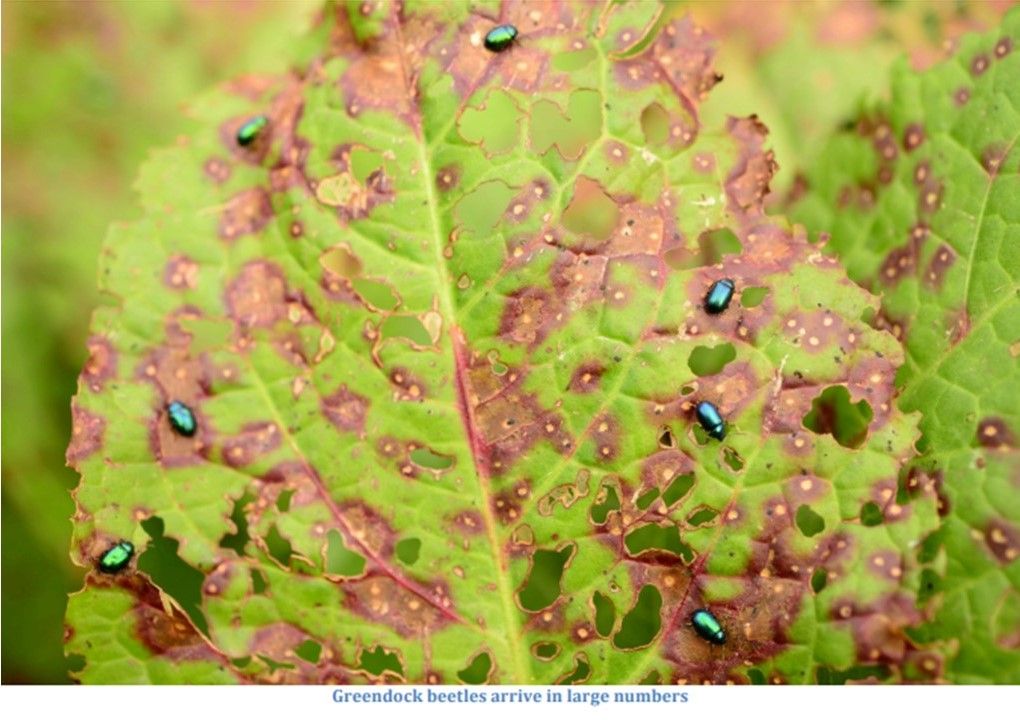
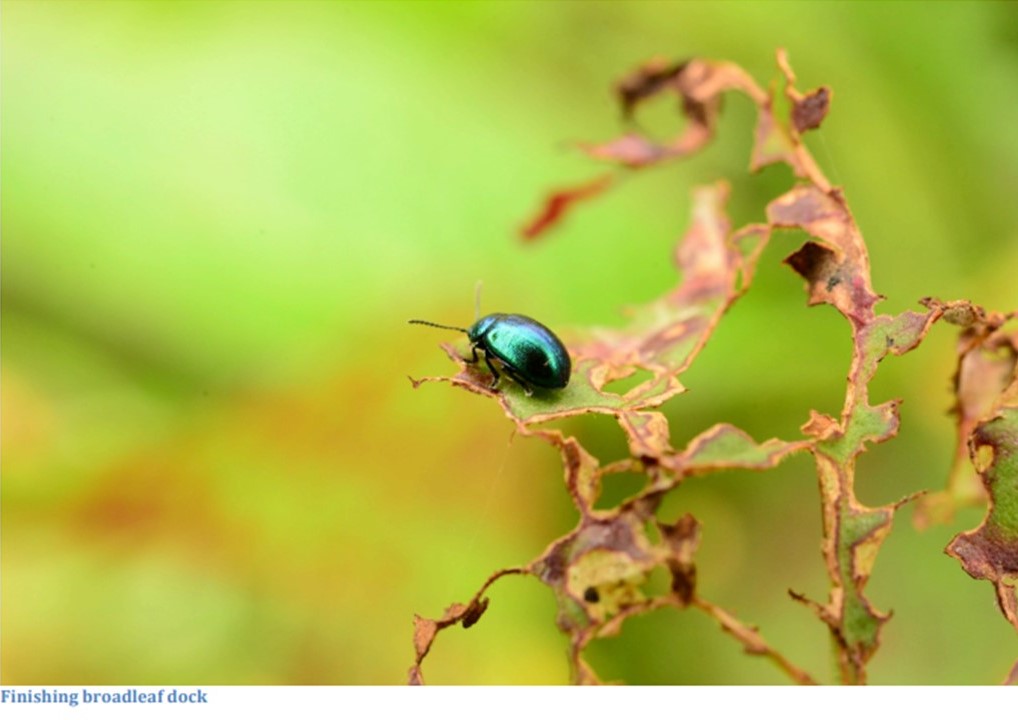
“Earlier experiments had shown significant effects of Agnihotra ash treatment on the
structure of algal/macrophyte/invertebrate communities in aquatic microcosms. Then, to
assess Agnihotra effects on survival and growth of Rana temporaria tadpoles, freshly
hatched ones were placed in water containers with algae, macrophytes and decaying plant
debris, with addition of Agnihotra or non-ritual ashes of the same substrate against
control tanks, placed each in triplicates at an Agnihotra and an organic farms in Southern
Poland.
Agnihotra ash treatment significantly increased growth of tadpoles by 17-32% and
reduced their mortality. With non-agnihotra ash the mortality was even higher than in
controls. Also, significant differences in final yield of diatoms, filamentous algae, plants
and in decomposition of plant debris were found. Agnihotra atmosphere may be
responsible for faster development and emergence of frogs. This is consistent with
observations of Agnihotra farmers who claim their crops ripe earlier and more
simultaneously than in conventional neighbours’ farms.
Although the mechanisms of Agnihotra effects on biota are not fully known, some
explanations are proposed. Further studies are needed on more endangered species, and
on treatment of chytridiomycosis, as Agnihotra ash is often considered an effective remedy
against fungal diseases. As many Agnihotra farms are located in or near global
biodiversity hotspots, they may contribute to conservation of endangered amphibian
populations living there.”
Recently biodiversity along the river Narmada in India was studied systematically under
the guidance of Dr. Shailendra Sharma, Principal, AIMS College in Damnod, Madhya
Pradesh. One study was about the bottom fauna of the river – analyzing the number of
various types of invertebrates in the mud from the riverbed.
For biological analysis the mud samples stored in bottles were immediately transferred to
the enamel trays for sorting and separation of individual organisms from the debris. The
bigger animals were picked up by forceps and were counted separately as number/m2.
The small animals were isolated by centrifugation, sieving and floatation.



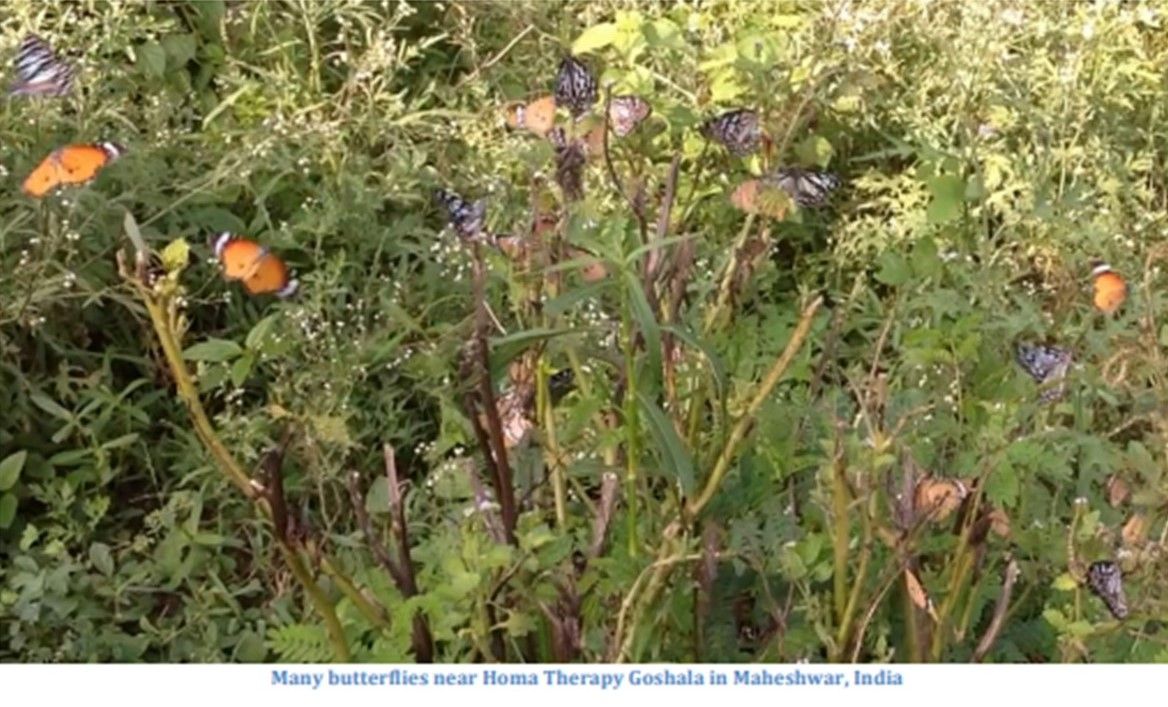

Abhay Mutalik Desai is a visionary farmer from the southern state of India, Karnataka. His profession is actually that of a chemical engineer, but his heart was beating for farming. This is his story:
“My father bought a 50 acre farm in1956 and started his farming career with chemical fertilizers. In those days chemical farming in India was new and the modern way of farming. The Agriculture department gave the chemical fertilizers for FREE, and so he became a pioneer grower of rice paddy with chemicals. It had a romantic beginning, and the first harvest brought 400 bags from 15 acres of land. This initial success made him an easy prey to the charm of chemical farming.
After 1974 things started to change drastically and taking an ugly turn:
Due to the ongoing deforestation, rainfalls decreased and created severe water scarcity in summer. Higher use of chemical fertilizers resulted in degradation of soil, affecting soil health, flora and fauna. Crop productivity reduced even when more chemicals , labor and water were used and the romantic take off of chemical farming turned into a nightmare. The soil was dying and our existence was at stake. This bitter experience was an eye opener for us and we were forced to look for new solutions:
Chemicals were stopped, each and every organic waste on the farm was turned into manure, compost and mulch. To our surprise our desperate changes resulted in a big comeback of earthworms and they started to create the most beautiful soil we could imagine.
In 1999 Shree Vasant Paranjpe introduced us to the methods of Homa farming and the nightmare my whole family was going through, finally stopped. His knowledge and guidance changed my vision of farming forever. I immediately implemented Homa Farming on all the 50 acres of land.
Within one year, all our land recovered and our soil was better than ever. Plants were healthy and strong with lower cost of production, less water and labor.
Our first crop of Vanilla beans had the highest content (2.9%) of Vanillin in India, in the year 2000, tested by the spice board of India. We had a good yield in paddy with minimum effort.
Since this time many farmers and agricultural scientists come to my farm and are amazed how easy farming operations have become here and how crop health and abundance has improved.
I conclude, even if we may not be able to explain Homa Organic Farming fully from a scientific point of view right now , the results obtained speak for themselves . Many farmers in my farmers group have adopted Homa farming methods and can protect themselves now successfully from the environmental changes we all have to face and secure their crops. “



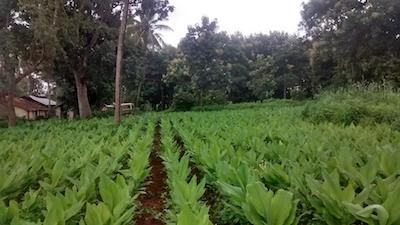
Distinct Achievements:
* 1999: First Homa-Farm in South India
* First Organic Certified Farm NPOP (EU) & NOP (USDA) to produce export quality organic jaggery products in Northern Karnataka.
*2002: Founder member and coordinator of Organic Food Club (NGO) run by certified organic farmers in district Belgaum
* 2009: Founder and President of Venugram Savayava Krishi Parivara (Trust) , Belgaum ;
* Chief Promoter of Certified Organic farmers market “Venugram Organic Fresh” since 2016 we are supplying organic vegetables , fruits and other food products to more than 600 families weekly.
Awards:
* 2001 Vocational Award from Rotary Club of Belgaum (South)
* 2003 First Prize & Award from Dept of Horticulture District Belgaum
* 2004 Krishi Pandit Award from K.L.E School of Agriculture
*2006 Krishi Pandit Award & first prize in organic farming from Govt of Karnataka 2005-06
* 2010 International State Award for Organic farming year
*2017 National Award “DHARTI MITRA” for best organic farming at 19th Organic World Congress Delhi
Technical Papers Presented:
* 2004 Importance of sustainable organic farming practices and inputs, ICAR Meerut 2004.
*2005 Fertigation in organic farming and practical approach in Homa Organic Farming at seminar jointly presented to ICAR and University of Agricultural Sciences Dharwad in.
* 2007 Experiences of Homa Organic Farming international seminar organized by Fivefold Path Mission India and Planning commission of India at Jalgaon 2007.
* Constraints for sustainability of rural livelihood -accepting challenges by organic farmer groups, National Seminar on Farmers, Livelihood and Trade October 2008 at NIAS Bangalore.
* SEZ is it a solution for development National Seminar on SEZ at KLE University Belgaum 2009.
* Self Reliance through Homa-Organic Farming at MAHA-ORGANIC Govt of Maharashtra Pune 2009.
* Sustainability with science based Organic agriculture, Homa Organic farming (HOF) Vedic Krishi at AICTEF/QIP short term course on ‘ Green Infrastructure’ IIT KHARAGPUR 2011.
* 2012 International Study Tour to China, selected by Department of Agriculture, Govt of Karnataka year 2012

We are thrilled to share with you that the construction of the Centre of Light has been going full steam ahead. We have already completed the structure for the second story, and next week the roof construction will begin. Our greatest joy would be to celebrate the completion of the roof by Christmas.
All this would not have been possible without the generous donations that we have received from many kind people around the world. We feel such gratitude for everyone’s support for what we are trying to achieve here. As evidenced by the many guests and visitors we have received this year, so many people are searching for not only ways to heal themselves and the planet, but also for meaning and purpose in their lives.
Bhrugu Aranya is an ancient land and it is one of three Points of Light on the Earth that are being maintained for planetary healing. The Centre of Light will not only be a venue for teaching Homa Therapy and sustainable ways of living, but also a safe haven for the coming times.
This year we have raised approximately 50,000 Euros ($59, 000) for the current Centre of Light campaign! Although our target for this phase is 90,000 euros, this is an amazing achievement.
We are building as if all the funds are already here, but we still need to raise the remaining 40,000 Euro to complete this phase of building.
If you wish to donate please visit our campaign page.
We are always open to fundraising ideas and to new contacts who can help us. If you have any suggestions please don’t hesitate to contact us.
If you are from the US and would like a tax deduction:
Please donate through our affiliate NGO in the U.S., Fivefold Path Inc., and choose Centre of Light, Poland project.
With gratitude and love,
All of us from Ecovillage Bhrugu Aranya Homa Community





